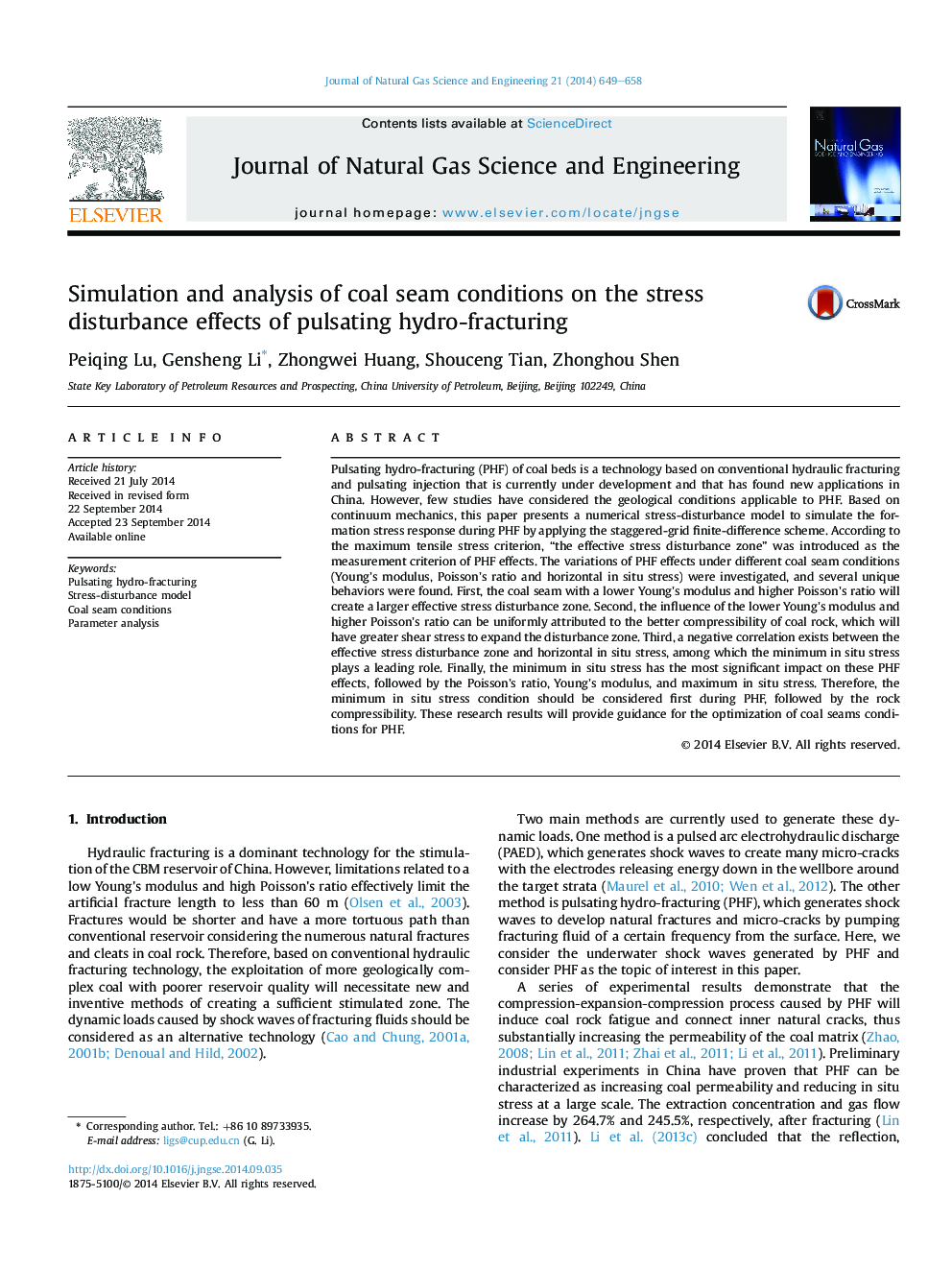| Article ID | Journal | Published Year | Pages | File Type |
|---|---|---|---|---|
| 8129326 | Journal of Natural Gas Science and Engineering | 2014 | 10 Pages |
Abstract
Pulsating hydro-fracturing (PHF) of coal beds is a technology based on conventional hydraulic fracturing and pulsating injection that is currently under development and that has found new applications in China. However, few studies have considered the geological conditions applicable to PHF. Based on continuum mechanics, this paper presents a numerical stress-disturbance model to simulate the formation stress response during PHF by applying the staggered-grid finite-difference scheme. According to the maximum tensile stress criterion, “the effective stress disturbance zone” was introduced as the measurement criterion of PHF effects. The variations of PHF effects under different coal seam conditions (Young's modulus, Poisson's ratio and horizontal in situ stress) were investigated, and several unique behaviors were found. First, the coal seam with a lower Young's modulus and higher Poisson's ratio will create a larger effective stress disturbance zone. Second, the influence of the lower Young's modulus and higher Poisson's ratio can be uniformly attributed to the better compressibility of coal rock, which will have greater shear stress to expand the disturbance zone. Third, a negative correlation exists between the effective stress disturbance zone and horizontal in situ stress, among which the minimum in situ stress plays a leading role. Finally, the minimum in situ stress has the most significant impact on these PHF effects, followed by the Poisson's ratio, Young's modulus, and maximum in situ stress. Therefore, the minimum in situ stress condition should be considered first during PHF, followed by the rock compressibility. These research results will provide guidance for the optimization of coal seams conditions for PHF.
Keywords
Related Topics
Physical Sciences and Engineering
Earth and Planetary Sciences
Earth and Planetary Sciences (General)
Authors
Peiqing Lu, Gensheng Li, Zhongwei Huang, Shouceng Tian, Zhonghou Shen,
